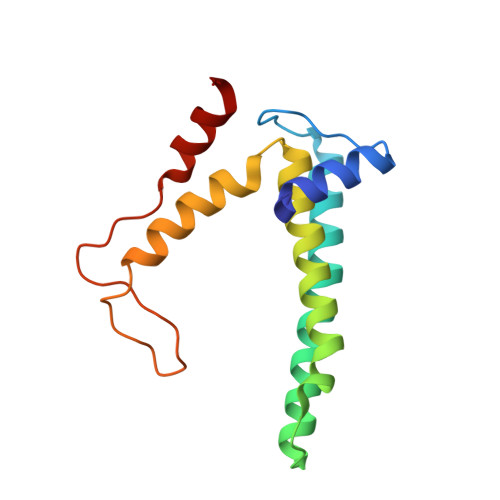Deinococcus radiodurans DR2231 is a two-metal-ion mechanism hydrolase with exclusive activity on dUTP.
Mota, C.S., Goncalves, A.M., de Sanctis, D.(2016) FEBS J 283: 4274-4290
- PubMed: 27739259
- DOI: https://doi.org/10.1111/febs.13923
- Primary Citation of Related Structures:
5HVA, 5HWU, 5HX1, 5HYL, 5HZZ, 5I0J, 5I0M - PubMed Abstract:
DR2231 from Deinococcus radiodurans was previously functionally and structurally characterized as an all-α NTP pyrophosphohydrolase with specific dUTPase activity. dUTPases have a central role in the regulation of dUTP intracellular levels and dTTP nucleotide metabolism. DR2231 presents a conserved dimetal catalytic site, similar to all-α dimeric dUTPases, but contrary to these enzymes, it is unable to process dUDP. In this article, we present functional and structural evidence of single-point mutations that affect directly or indirectly the enzyme catalysis and provide a complete description of the all-α NTP pyrophosphohydrolase mechanism. Activity assays, isothermal titration calorimetry and the crystal structures of these mutants obtained in complex with dUMP or a dUTP analogue aid in probing the reaction mechanism. Our results demonstrate that the two metals are necessary for enzyme processing and also important to modulate the substrate binding affinity. Single-point mutations located in a structurally mobile lid-like loop show that the interactions with the nucleoside monophosphate are essential for induction of the closed conformation and ultimately for substrate processing. β- and γ-phosphates are held in place through coordination with the second metal, which is responsible for the substrate 'gauche' orientation in the catalytic position. The lack of sufficient contacts to orient the dUDP β-phosphate for hydrolysis explains DR2231 preference towards dUTP. Sequence and structural similarities with MazG proteins suggest that a similar mechanism might be conserved within the protein family. Structural data are available in the PDB under the accession numbers 5HVA, 5HWU, 5HX1, 5HYL, 5I0J, 5HZZ, 5I0M.
Organizational Affiliation:
ESRF - The European Synchrotron, Grenoble Cedex 9, France.
















